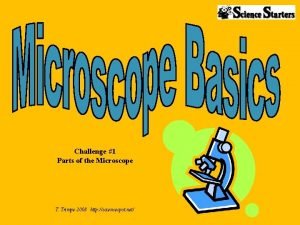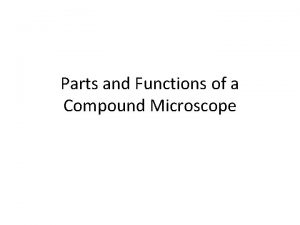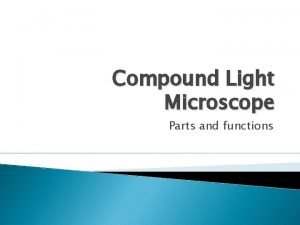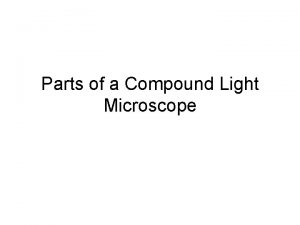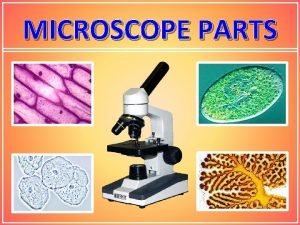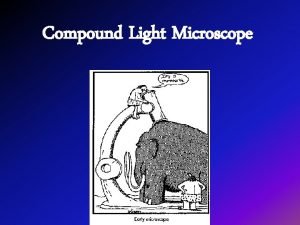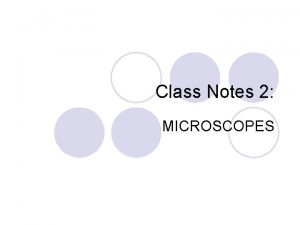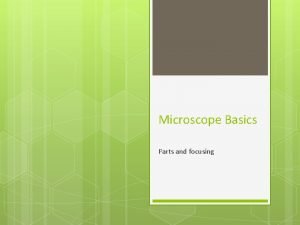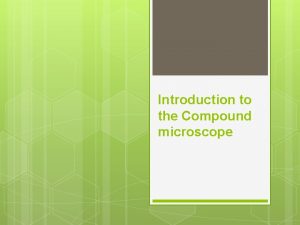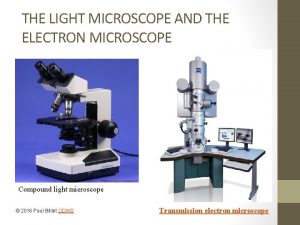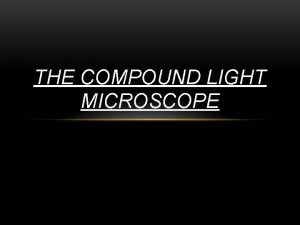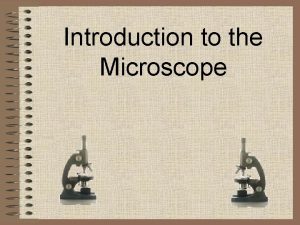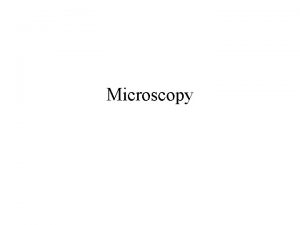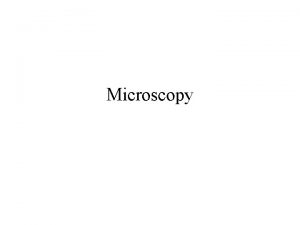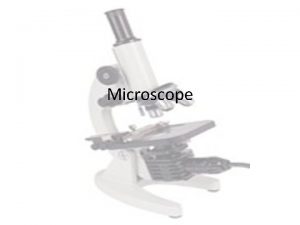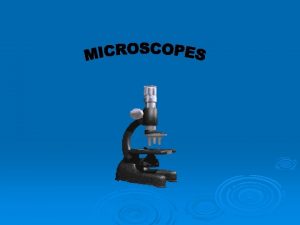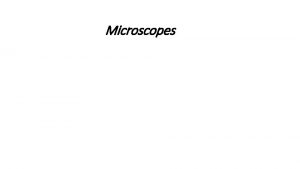THE LIGHT MICROSCOPE AND THE ELECTRON MICROSCOPE Compound













- Slides: 13

THE LIGHT MICROSCOPE AND THE ELECTRON MICROSCOPE Compound light microscope © 2016 Paul Billiet ODWS Transmission electron microscope

UNITS OF MEASUREMENT 1 m = 103 mm (millimetres) 1 m = 106 µm (micrometres) 1 m = 109 nm (nanometres) Sometimes in old texts Angstroms (Å) are used (the diameter of a hydrogen atom) 1 m = 1010 Å © 2016 Paul Billiet ODWS

The electromagnetic spectrum © 2016 Paul Billiet ODWS

Light v Electron © 2016 Paul Billiet ODWS

Magnifying using the Light Microscope © 2016 Paul Billiet ODWS

Magnifying using the Electron Microscope © 2016 Paul Billiet ODWS

THE LIGHT MICROSCOPE v THE ELECTRON MICROSCOPE FEATURE Electromagnetic spectrum used Maximum resolving power Maximum magnification Radiation source Lenses Interior Focussing screen © 2016 Paul Billiet ODWS LIGHT MICROSCOPE ELECTRON MICROSCOPE Visible light Electrons 760 nm (red) – 390 nm Colours visible app. 4 nm Monochrome app. 200 nm 0. 2 nm Fine detail x 1000 – x 1500 x 500 000 Tungsten or quartz halogen lamp High voltage (50 k. V) tungsten lamp Glass Air-filled Magnets Vacuum Human eye (retina), photographic film fluorescent (TV) screen, photographic film

THE LIGHT MICROSCOPE v THE ELECTRON MICROSCOPE FEATURE Preparation of specimens Fixation Embedding LIGHT MICROSCOPE Temporary mounts living or dead ELECTRON MICROSCOPE Tissues must be dehydrated = dead Alcohol Os. O 4 or KMn. O 4 Resin Sectioning Wax Hand or microtome slices 20 000 nm Whole cells visible Microtome only. Slices 50 nm Parts of cells visible Stains Water soluble dyes Heavy metals Glass slide Copper grid Support © 2016 Paul Billiet ODWS

Embedding in resin © 2016 Paul Billiet ODWS © P Billiet

Microtome knife © 2016 Paul Billiet ODWS © P Billiet

Copper grid slides © 2016 Paul Billiet ODWS © P Billiet

CELL STRUCTURE AND MICROSCOPY SUBCELLULAR STRUCTURE EUKARYOTES PROKARYOTES ANIMAL CELLS PLANT CELLS - but may have an extracellular matrix + + but not of cellulose Plasma membrane + cholesterol present + + Nucleus & nucleoli + + - + (DNA + Protein) Circular loop of DNA Centrioles + - - Mitochondria + + - Plastids (chloroplasts, chromoplasts etc. ) - + - Sap vacuole - + - Food vacuoles Some - - Contractile vacuoles Some - - Pseudopods Some - - Cilia Some - - Flagellae Some Rotating Microtubules + + - Lysosomes + - - Golgi apparatus + + - Some - - Cell wall Chromosomes Microvilli

CELL STRUCTURE AND MICROSCOPY SUBCELLULAR STRUCTURE EUKARYOTES PROKARYOTES ANIMAL CELLS PLANT CELLS Endoplasmic reticulum + + - Nuclear envelope & pores + + - Vesicles + + - +(80 S) +(70 S) Organelle membranes + + - Macromolecular structures + + + Ribosomes © 2016 Paul Billiet ODWS
 Difference between light microscope and electron microscope
Difference between light microscope and electron microscope Microscope mania compound light microscope
Microscope mania compound light microscope Draw tube microscope function
Draw tube microscope function Sharpens the image under high magnification.
Sharpens the image under high magnification. Microscope parts mirror
Microscope parts mirror Petrographic microscope parts
Petrographic microscope parts Body tube microscope function
Body tube microscope function Who was pulakeshin 2
Who was pulakeshin 2 Label the parts of a compound light microscope
Label the parts of a compound light microscope University of delaware virtual microscope
University of delaware virtual microscope Compound light microscope definition
Compound light microscope definition Explain the cartoon in your own words
Explain the cartoon in your own words 1886 modern compound light microscope
1886 modern compound light microscope Compound light microscope
Compound light microscope

